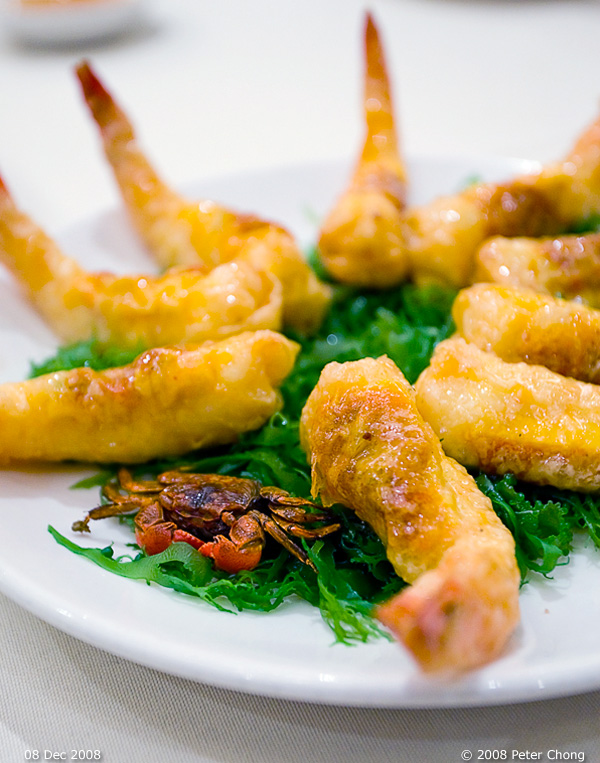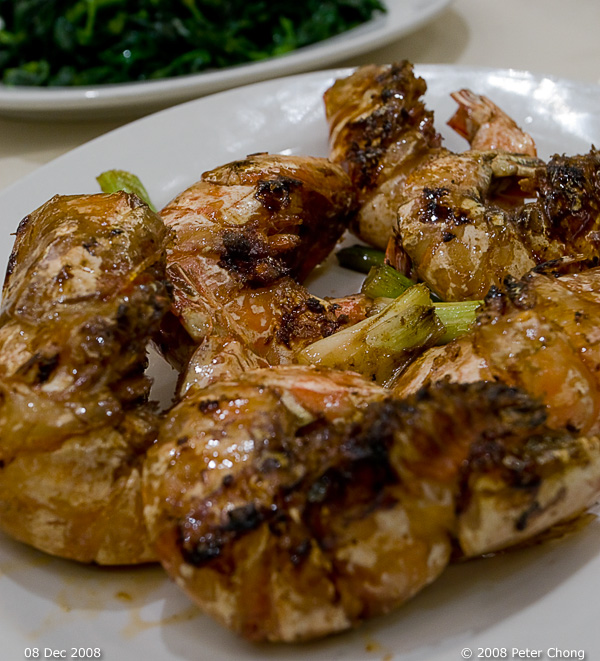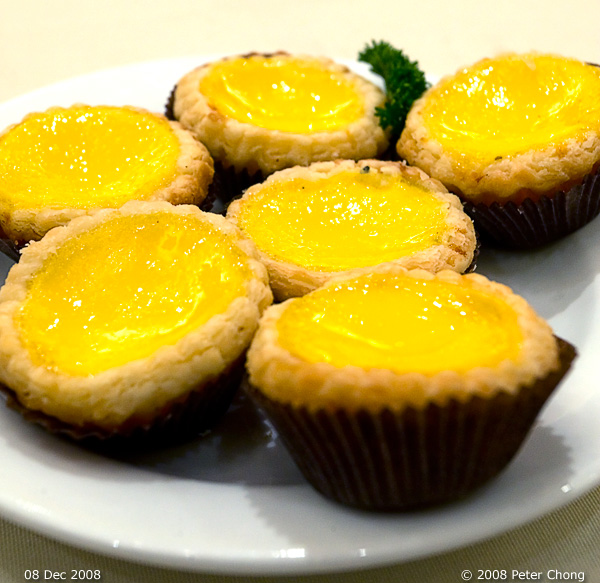Two one star Michelin restaurants in one single day...I won't be able to afford this in Europe, but in Hong Kong, it is not as much a stretch of the wallet. Earlier for lunch, we ate at Lei Garden, IFC, and the evening, we dined with my friends Steve, his lovely wife Shirley, and Sean at Yung Kee. This restaurant has been on every recommended list for nearly forever. It even has its own page in Wiki. The restaurant was awarded one Michelin star in the 2009 guide.
Their Century Eggs (preserved eggs with sliced ginger) are legendary

Typically preserved with a mixture of lime, clay, ash, salt and rice straw for several weeks. During the process, the raw duck eggs become pickled - the proteins get broken down into smaller but more aromatic products. The yolk acquire a creamy texture, and a greenish tinge. A strong fragrance of ammonia and sulphur. The whites become a clear, but black translucent jelly. Eaten with pickled ginger, the combination was served as an hors d'œuvre. The yolk was very creamy and the fragrance of the ammonia and sulphur was not overpowering, but lightly piquant. Certainly the best Century Eggs I have eaten.
Next was the even more famous roast goose.

The restaurant made its name in the culinary world with the crispy, aromatic, tender roasted goose. That evening, the goose was a little salty, but full of flavour. The skin remained crispy - a technique possibly developed for the Peking Duck - involving soaking in brine, scalding and icing the bird, and air drying before roasting produced a very thin, crisp skin. It is possible that the bird did not spend sufficient time being washed of the brine before scalding which may account for the slightly saltier taste. However, I do have a more acute tolerance of salt than most...sometimes preferring a blander version to one too heavily seasoned...because the flavour and taste of the quality meat shines through with less seasoning.
The goose was served in a sweet, slightly sour plum sauce which is a good complement. Quite tasty and probably worthy of the fame.
The deep fried prawns with crab roe in bean curd skin was also an award winner.

The crisp deep fried bean curd skin contrasted with the juicy, fresh, succulent prawns ably supported by the counterpoint of the rich crab roe. The prawns were excellent. The entire ensemble was assembled on top of sea weed, and even had a decoration of a baby crab. Edward ate the crab, which tasted like soft shelled crab, but with a harder, crispy outer.
Steamed fish is often a measure of a chef. Even though the dish is ultra simple...come-on what could be simpler than steaming fish...I think beable to do the perfect steamed fish is a mark of a good chef's estimation and control of fire and steam. And also his ability to season correctly and garnish well.

This fish was perfectly steamed. The meat was cooked, but just ever so slightly at the bone, it was a little rare. Excellent. The sauce was just soy sauce and spring onions, and allowed the freshness of the fish to shine. The maitre d' brought the live fish for inspection before the chef cooked it, so we know this was very fresh fish.
We added a second prawn dish after the first turned out so well.

This turned out to be a real winner. Super fresh prawns...they didn't bring them for inspection, but I suspect these were live prawns. The extra large prawns...almost the size of a small lobster, were crisply deep fried, and seasoned with only a tiny bit of salt, pepper and perhaps a touch of soy sauce, the superior ingredients shone. Sweet, crunchy, sea fragrance was all apparent in spades.
A claypot of sliced beef in ginger and spring onions was next.

The chef showed his superior ability once again. The slices of beef were tender almost to a fault. The sauce was fragrant, salty, but also complemented the meat. The traditional accompaniment of sliced ginger and spring onion provided support to the chorus.
Egg tarts were served as a palate cleanser before dessert.

These were not as wonderful as those served by Tai Cheong, but were nevertheless very good. Shortening was used to create the pastry, and the custard was not quite as runny or as tasty as Tai Cheong's.
For dessert, we were divided into two camps. One camp chose the red bean tong sui. And the other selected the mango pudding.

Those who had the red bean, was very pleased with their choice. I did was not amongst that group, and can only show you the picture...you can see that the red bean used was the superior quality - large, and from where I sat, I could smell the beautiful aroma.

The mango pudding was not extra-ordinary...but still quite tasty. I opted for this as I disliked red bean which tend to stick to the teeth after.
So after experiencing two one star establishments and several of the listed Cheap Eats in Michelin 2009 Hong Kong and Macau, what do I think of the awards? Surprisingly, I find myself mostly agreeing to the verdicts...if you keep to the guide, you will eat well. But I know that if you are religious in keeping only to recommended restaurants, you will miss out in some wonderful food in Hong Kong. There are just so many eateries in Hong Kong which rise above the normal conundrum, and only able to do so, because they are supported by a food crazy public.
Yung Kee Restaurant
Address: 32-40 Wellington Street, Central, Hong Kong
url: http://www.yungkee.com.hk
Email: info@yungkee.com.hk
Tel: (852) 2522 1624
Fax: (852) 2840 0888
No comments:
Post a Comment